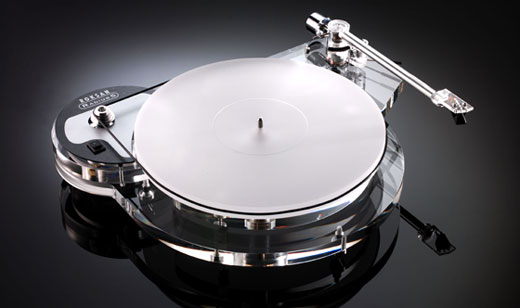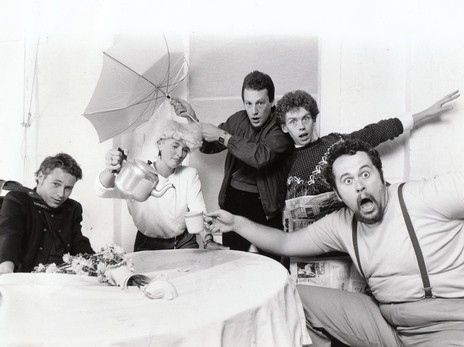4.5 Stars
$3999 (Corus Silver cartridge $1149 extra)
Can supermodel looks also translate to fine audio performance? Roksan thinks so with its new Radius turntable…
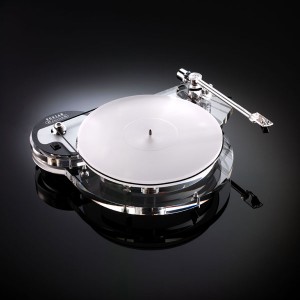 Some guys get all the luck eh? I’ve no idea why Mr Kramer turned this one down, maybe he was too busy scoffing down vege curries at his local and was afraid to get his cumin stained hands all over the Roksan Radius 5.2’s glorious clear acrylic.
Some guys get all the luck eh? I’ve no idea why Mr Kramer turned this one down, maybe he was too busy scoffing down vege curries at his local and was afraid to get his cumin stained hands all over the Roksan Radius 5.2’s glorious clear acrylic.
Not one to turn down a golden opportunity I duly obliged his pleading and removed the Roksan from his grasp, then hurried home to set up the little beauty before getting stuck into the first of many listening sessions.
Firstly I began the unpacking process: luckily for me the corrugated carton didn’t weigh a ton, but thankfully all the goodies inside were extremely well protected by foam packaging and carefully placed heavyweight cardboard sheets.
A semi-suspended design, the Radius 5.2 has a 24-pole AC motor bolted to the lower of 2 plinths with the top plinth isolated with rubber grommets. The motor is isolated further by being mounted in a flexible housing, and this in turn drives the opaque acrylic platter with a synthetic belt.
The Radius 5.2 comes standard with Roksan’s acclaimed Nima unipivot tonearm. Unlike the majority of arms on the market unipivots have only one pivot point instead of 2, so arm set-up and a well-damped turntable is even more critical. Fans of this style of arm attest to the musicality and openness of the sound they produce, and manufacturers such as Naim, Hadcock and VPI all use this style of construction.
Once unpacked it was a simple job to fit the acrylic platter and belt: the Nima tonearm had Roksan’s own Corus Silver Moving Magnet cartridge fitted, so most of the hard work had been done for me.All I had to then was fit the antiskate weight, screw in the funky stainless steel feet and level the player on my support stand. This meant removing my trusty Pro-Ject Studie, but as much as I love this turntable I’m always eager to try new audio morsels and there were no tears in my eyes as I dispatched it to the spare room.
A 5-pin cable (complete with earth lead) is supplied with each Radius and although it’s not exactly high-end quality, at least owners will be able to upgrade to a superior one at a later date.
So once I’d cabled the table up to my system it was time to step back and admire the gleaming new supermodel on the rack before the listening tests.
Aesthetically the Radius is a stunner, both chassis and subchassis are formed from slabs of beautifully polished acrylic, while the Nima tonearm carried on the theme with an acrylic headshell and bearing yoke complementing the extruded alloy arm tube.
For all the technology and high-tech materials used the Radius looked an uncomplicated and understated player, but visitors made a beeline for the deck as soon as they entered my listening room.
Listening tests were carried out with the following equipment: Trichord Dino/Dino + and Firestone Audio Korara phono stages / Korsun V8i integrated / Musical Fidelity Nu-Vista Pre-Power and either my beautiful Voigt ‘Vofo’ single driver speakers and a pair of Yamaha Soavo 900M bookshelves (about to be reviewed on these pages).
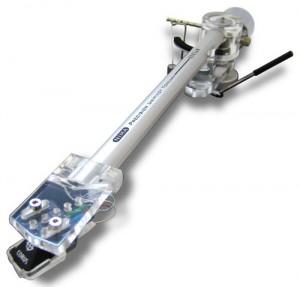 I’ve bought more vinyl than cd’s in the last few years, primarily because it just sounds better – and luckily the growing collection contains some excellent recordings; both of the ‘audiophile’ variety and common garden popular music, so I had lots of near new software to spin.
I’ve bought more vinyl than cd’s in the last few years, primarily because it just sounds better – and luckily the growing collection contains some excellent recordings; both of the ‘audiophile’ variety and common garden popular music, so I had lots of near new software to spin.
I started with my 180gsm cut of Marvin Gaye’s legendary What’s Going On, and sat back as the stylus entered the lead-in groove.
And what a sweet sound it made indeed. Surprisingly, the Radius wasn’t an analytical vacuum cleaner as I’d expected – extracting every last detail from each groove, but a natural sounding music maker of the ‘tap your feet’ variety. Sure there was plenty of detail on offer, but I wasn’t focussing on it – rather enjoying the soulful voice of Marvin and his band. Swapping one genre for another and I soon had Kraftwerk’s Tour De France on the platter. Here the Radius excited this reviewer with a deep and nimble bass, while the robotic voices of the four personality challenged Germans resonated around my room. It was cracking stuff all right, and the sound of huffing and puffing cyclists on Electro Kardiogramm had a realism that seemed better than the real thing (on telly, at least).
So what of the vices then? I did notice a subtle roll-off in the high frequencies as compared to my own rig, but this could be explained by a bright presentation due to my choice of cartridges rather than the Radius itself. You get used to a certain sound after time, you see.
I really like this turntable! It’s certainly not an inexpensive component, but from memory it compares favourably in sound quality with the Avid Diva 2 I had a play with a while ago and that’s quite some feat. 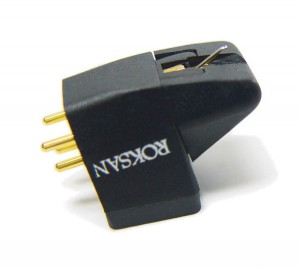
In summing up, the Radius/Nima combination (and your choice of cartridge – the Corus is recommended also) is a well though out and easy to set up package that fulfils its main criteria – excellent sound quality first and foremost.
Gary Pearce
www.harmonicaudio.co.nz

